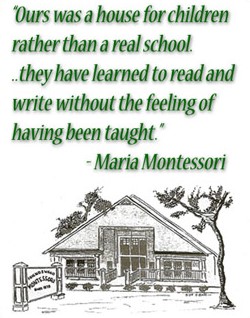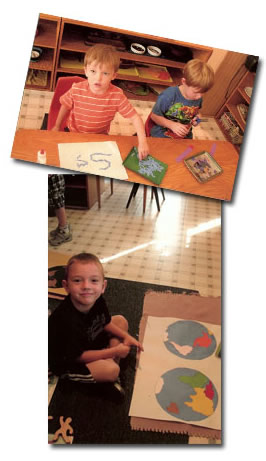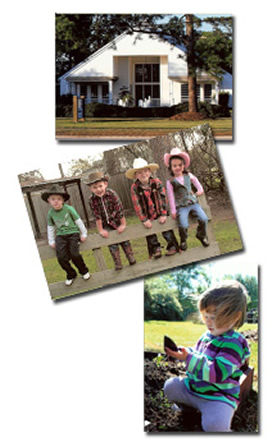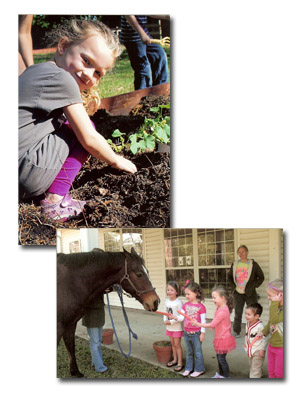Montessori Philosophy
The Aims of Practical Life
The practical life area offers the child an immediate connection between school and home-related activities and helps the child become comfortable in taking responsibility, in establishing social interactions, and in perfecting himself in the practical-living experiences necessary for life.
The materials are designed and presented to meet the needs of each individual child and to achieve the following aims:
- Order
- Concentration
- Coordination
- Judgment
- Independence
- Responsibility
- Care of Self

The Aims of Cultural Subjects
The geography, science, and history materials are designed to help a child understand his universe and specifically his responsibility to it. The materials provide particular experiences in understanding living and non-living things, scientific information and experiments, land formations, weather, time, the hemispheres and continents of the world, historical events and inventions, and objects from nature. Animal and plant care are emphasized.
The aims of the cultural subjects are:
- Responsibility to nature
- Responsibility to man
- Understanding the universe
- Understanding our heritage
- Knowledge of cultures
- Humility

Sensorial Area
The sensorial area provides the child all the necessary experiences to develop and perfect his senses; those senses include visual, tactile, auditory, gustatory, olfactory and stereognostic. While repeating his work with the sensorial material, the child begins to make finer discriminations of size, shape, weight, sound, temperature and taste, thereby achieving a refinement of the senses.
The sensorial material is designed to achieve the following aims:
- Refinement of the senses
- Order
- Concentration
- Coordination
- Independence
- Judgment

The Aims of Language
The language materials provide the young child the "tools" for reading. The materials are not designed to "teach" a child to read, but specifically to provide the child with the necessary preparation so the child will be able to read when he is ready.
The language materials first provide experience in the spoken language (vocabulary). Then the child begins to isolate the sounds in words and identify the symbols for those sounds (the alphabet). Through word-building the child begins to understand the concept of a word and begins to read words.
The aims of language are:
- Vocabulary
- Knowledge of sound & symbol
- Word-building (spelling)
- Reading
- Reading comprehension
- Grammar & syntax
- Creative writing

The Aims of Math
The math area provides the young child with valuable concrete experiences with mathematical concepts and slowly moves from that concrete experience into the more abstract. The child will have felt and experienced "ten-ness" before he counts to ten.
He first begins with numeration 1-10 and moves into amounts beyond ten. The golden bead material provides the child with concrete experiences in the decimal system and an understanding of hierarchical value and base ten.
The aims of math are:
- Numeration 1-10
- Decimal system
- Numeration beyond 10
- Functions of 4 operations
- Memorization of 4 operations
